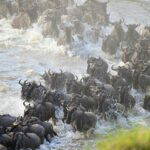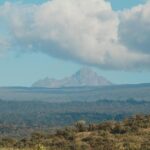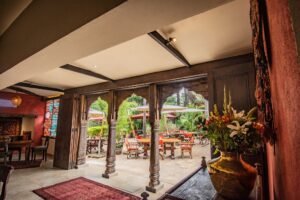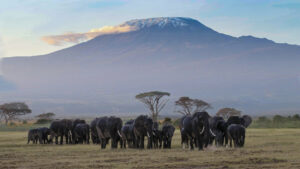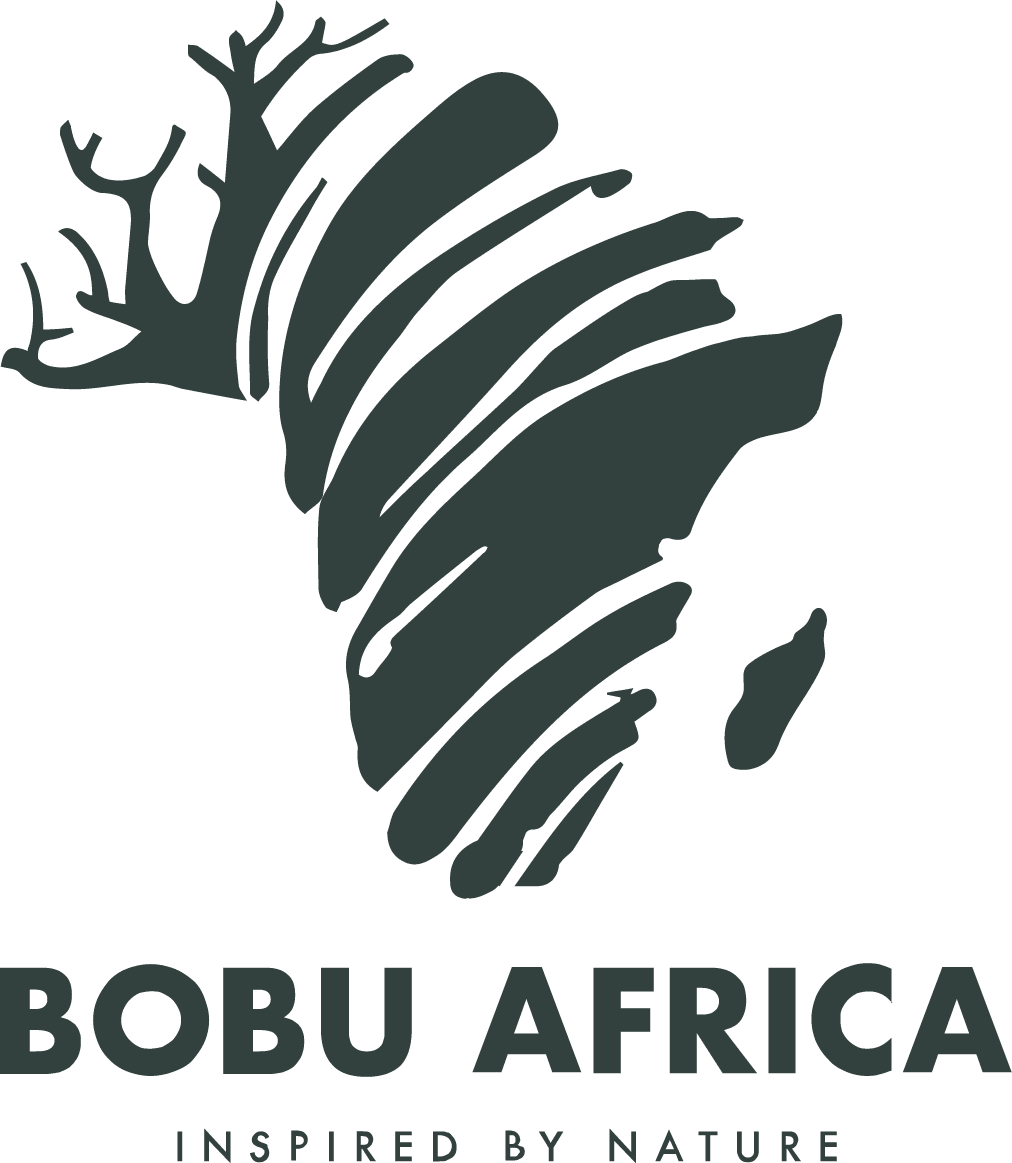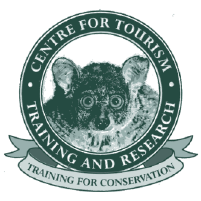- Nairobi national park
The World’s only Wildlife Capital”
A short drive out of Nairobi’s central business district is the Nairobi National Park. Wide open grass plains and backdrop of the city scrapers, scattered acacia bush play host to a wide variety of wildlife including the endangered black rhino, lions, leopards, cheetahs, hyenas, buffaloes, giraffes and diverse birdlife with over 400 species recorded. Visitors can enjoy the park’s picnic sites, three campsites and the walking trails for hikers.
- Giraffe center
The Giraffe Centre is located in Lang’ata, approximately 20 kilometers from the centre of Nairobi, Kenya. It was established in order to protect the vulnerable giraffe that is found only in the grasslands of East Africa
In 1979, the Giraffe Center, a nature sanctuary for visiting and including wildlife conservation education for urban school children, was started by Jock Leslie Melville, the Kenyan grandson of a Scottish Earl, when he and his wife Betty captured two baby giraffe to start a programme of breeding giraffe on their Langata property, site of the present Centre. Since then the programme has had huge success, resulting in the introduction of several breeding pairs of Rothschild Giraffe into Kenyan national parks. By 1983 enough money had been raised to establish the Giraffe Visitor’s Center as a tourist destination just outside Nairobi. The main attraction for both school children and visitors is feeding giraffes from a raised observation platform. The Giraffe Center is also home to several warthogs which freely roam the area along with the giraffes
- Nairobi National Museum
The Nairobi National Museum is the flagship brand for the National Museums of Kenya. Located on Museum Hill, the museum showcases Kenya’s rich Heritage with four distinct themes representing Kenya’s Culture, Nature, History and Contemporary Art. Other attractions within the compound include the Snake Park and Botanical Gardens as well as a State of the Art Auditorium that occasionally hosts concerts, film shows and other events. Dining and shopping facilities await you after your tour with us in our commercial wing.
4. Bomas of Kenya
Bomas of Kenya is a tourist village in Langata, Nairobi. Bomas displays traditional villages belonging to the several Kenyan tribes. Bomas of Kenya is home to one of largest auditorium in Africa. It is located approximately 10km from the Central Business District.
Each boma (homestead) in this cultural village was built using traditional specifications of myriad Kenyan tribes; through architecture, crafts, music and dance this village serves to preserve Kenyan culture.
- Ngong Hills
The Ngong Hills are peaks in a ridge along the Great Rift Valley, located southwest near Nairobi, in southern Kenya. The word “Ngong” is an Anglicization of a Maasai phrase “enkong’u emuny” meaning rhinoceros spring, and this name derives from a spring located near Ngong Town
Trek through the Ngong Forest Reserve on a hiking tour from Nairobi into the scenic Ngong Hills. You’ll set out on a trail that crosses each of the reserve’s seven hills, with the option to summit three or tackle the entire series, enjoying views of the Great Rift Valley and the Nairobi skyline as you walk.
- David Sheldrick
The Sheldrick Wildlife Trust is based in Nairobi, Kenya, with a field headquarters bordering Tsavo East National Park. The Sheldrick Wildlife Trust is a separately registered charity in the UK and is directly supported by Sheldrick Wildlife Trust USA, a registered 501(c)(3) in the United States.
Born from one family’s passion for Kenya and its wilderness, the Sheldrick Wildlife Trust was established 45 years ago and is best known for its Orphans’ Project, the first and most successful elephant orphan rescue and rehabilitation program in the world. The Sheldrick Wildlife Trust is a pioneering conservation organisation, dedicated to the protection of wildlife and the preservation of habitats in East Africa.
- Karura Forest
The Karura Forest Reserve is an urban upland forest on the outskirts of Nairobi, the capital of Kenya. The forest was gazetted in 1932 and is managed by the Kenya Forest Service in conjunction with the Friends of Karura Forest Community Forest Association. This remarkable geographical location and natural resource is one of the largest gazetted forests in the world fully within a city limits.
It covers an area of about 1,000 ha (2,500 ac) consisting of three parts separated by Limuru and Kiambu roads and today is a shining example of how country-based corporate social responsibility and individual philanthropy can serve to secure and protect a country’s natural resources.
The forest offers eco-friendly opportunities for Kenyans and visitors to enjoy a leafy
green respite from the hustle and bustle of the city to walk, to jog, or simply to sit quietly and experience the serenity of nature in all its diversity.
- Oloolua
Oloolua Forest is an important wildlife refuge and biodiversity hotspot.
Considered as a lung for Nairobi, the forest covers 618 hectares and is home to significant acreage of indigenous trees. The forest is part of the larger Ngong Forest block which also comprises Ngong Hills and Kibiko Forest blocks.
Within an ever increasing urban environment, the forest provides a safe heaven for a number of mammal species, birds, indigenous flora and fauna.The forest, a biodiversity hotspot is home to large numbers of indigenous trees, birds and small wildlife.
Not only is Oloolua Forest a wildlife and nature heaven, it’s the perfect opportunity to escape the hustle and bustle of Nairobi city life, you can explore the forest on various.
Nature Trails,
Visit the waterfalls,
Enjoy picnic lunches at the numerous picnic spots,
Visit the 37 meter Mau Mau cave,
Viewing Tower.
- Village market
East Africa’s largest entertainment and shopping destination.
The Village Market is East Africa’s largest Shopping, Recreation and Entertainment destination. The complex is home to over 150 outlets covering 210,000 square feet of retail space, 20,000 square feet of office space in addition to a host of recreation facilities.
As the name suggests, the complex embodies the spirit of the African market in an open-air setting. To live up to its African theme, are waterfalls, rivers and over 2000 exotic plants and gardens, giving this magnificent shopping centre an edge over other shopping malls. Since its inception 14 years ago, The Village Market has revolutionized shopping while redefining recreation and entertainment. Over the years, the centre has successfully been able to blend modernity and culture to provide an aura of modern shopping.




